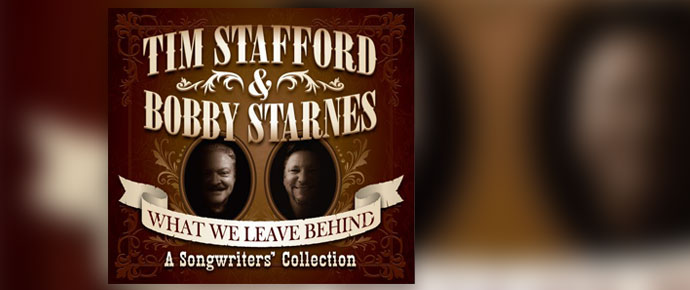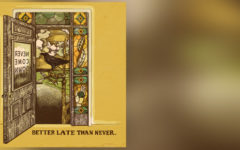
A welcome new trend in bluegrass this past decade or so is the songwriter project, where songsmiths record a full album of their new material and offer it to the market.
It only makes sense, as expectations of song demos have risen to near-CD perfection; why not just go ahead and finish the production into a song ready for download? Or make a complete album for sale? And if you own or have ready access to a studio, what’s to stop you?
Tim Stafford has been at the forefront of this trend, doing a record of songs that he and Steve Gulley wrote together in 2010 called Dogwood Winter. It struck us as one of the best bluegrass releases of that year, but it didn’t get a ton of attention, perhaps because there was no tour support. But the writing and the recording was strong, and it’s one I return to for a listen still today.
Now Tim has done it again, this time with another of his favorite writing partners, Bobby Starnes. He and Stafford are not only co-writers in the song realm, Starnes was Tim’s partner in the publishing business for Still Inside – The Tony Rice Story, which Tim wrote with Caroline Wright. Bobby is also the owner and operator of Hat Creek Recording Company in Jonesborough, TN.
Their new record is called What We Leave Behind – A Songwriters’ Collection, with 14 new songs they composed together, grouped into three stylistic sections. There are four purely bluegrass songs, five traditional country, and another five described as Americana. Each are produced as would be expected owing to their style, giving a wide representation of the sort of music that Tim and Bobby write.
The four grass numbers are driven by Ron Stewart on banjo and fiddle, Jacob Burleson on mandolin, Daniel Slyer on bass and tenor vocals, with Stafford on guitar. They kick off with Shotgun Sam, which Tim sings, a bluesy song about a revenue agent who prowled the mountains looking for the hidden still site of one Buckshot Bill. Like so many Stafford songs, it sounds as though it was written back in 1930s.
Hallelujahland features the singing of Keith Williams, one of the special musical treats of east Tennessee. It’s a very traditional bluegrass Gospel song, with a call-and-response chorus, taken at a sprightly pace. Things slow down a little for Steady Betty, another blues-inflected piece about an old fashioned moll for gambler, Ready Freddy. For Somewhere Down The Road, we have Starnes on lead vocal, a more contemporary song about moving on.
Many bluegrass fans also enjoy country music, at least of the traditional variety, and there are several gems here. Trey Hensley delivers a fine country vocal on Keep It Merle, a honky tonk song that entreats the music to follow three simple commandments: “Keep it real, keep it country, keep it Merle.” We get a more somber story in My Ropin’ Days Are Done, which tells the tale of a rodeo competition cowboy who is coming to the sad conclusion that it’s time to give up the dream, and stay home with his wife. Told in 3/4 time like many of the great cowboy songs of yore, it will strike a chord with anyone who follows rodeo. Tim Shelton gives a stellar vocal performance.
For the Americana section, we get a number of different moods, from the bossa nova vibe on Lover’s Masquerade, sung by Beth Snapp, to the James Taylor sound of Gonna Build Me A Boat.
It’s likely that serious bluegrass lovers will mostly enjoy the the first half of this album, though all the tracks are expertly produced and performed. The vocal presentations from Williams, Hensley, and Shelton are worth the price of admission on their own, and Tim brings his own unique and gritty sound to several other strong selections.
What We Leave Behind is available wherever you stream or download music online, but if you want to support the artists directly, you can get a CD or download from Tim’s web site.
There is a lot of great music here, and very worthy of your attention.







